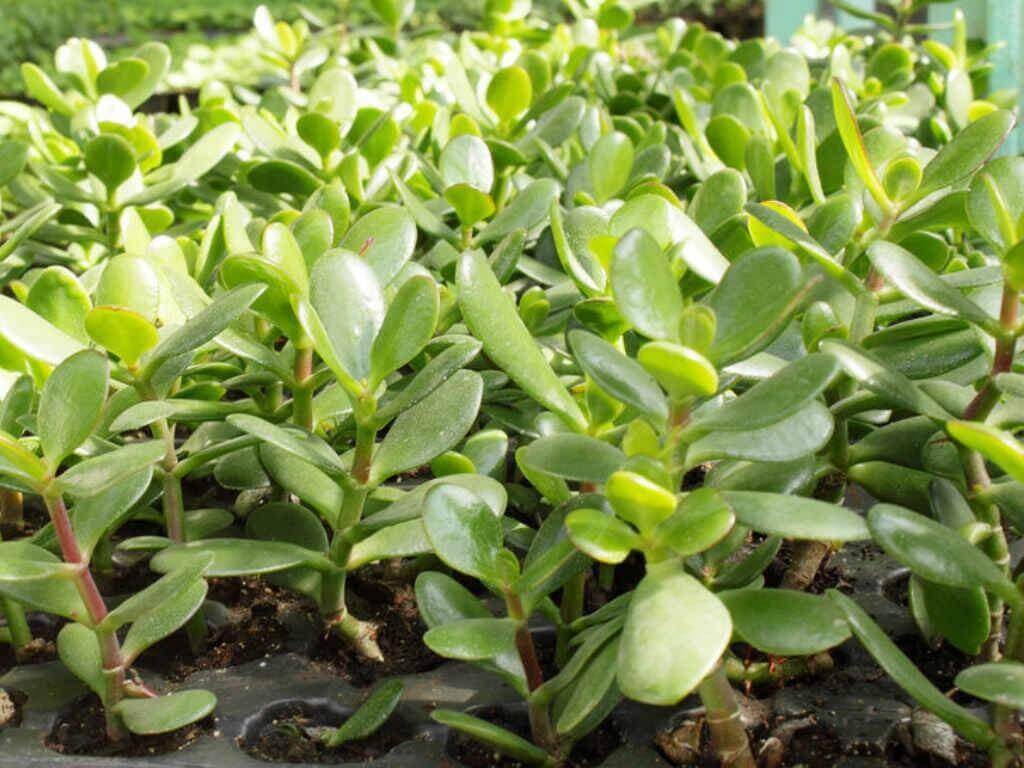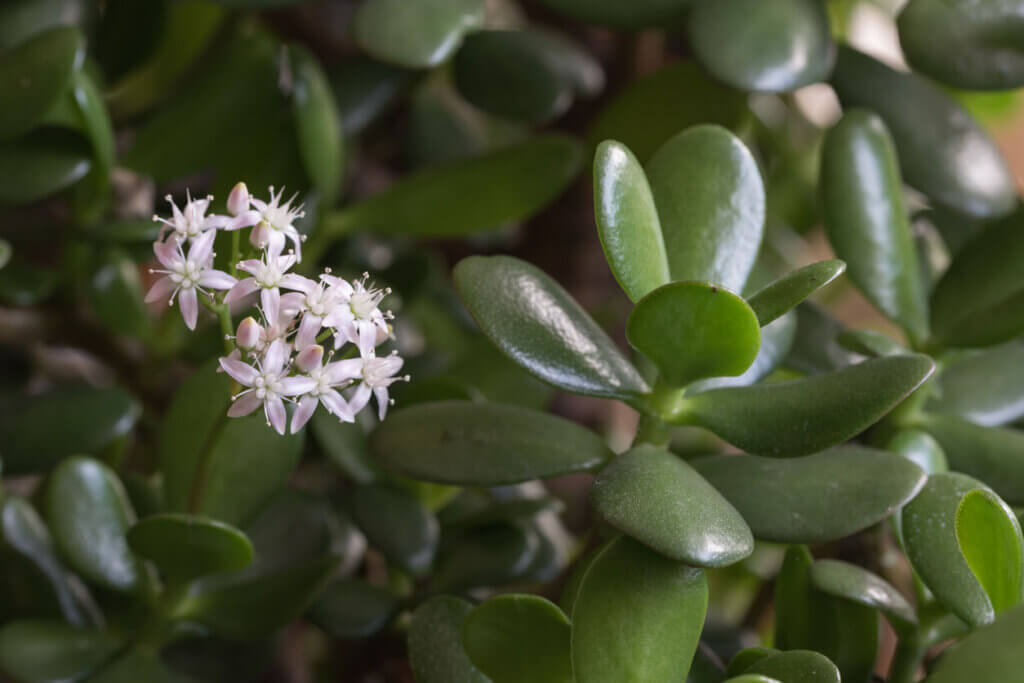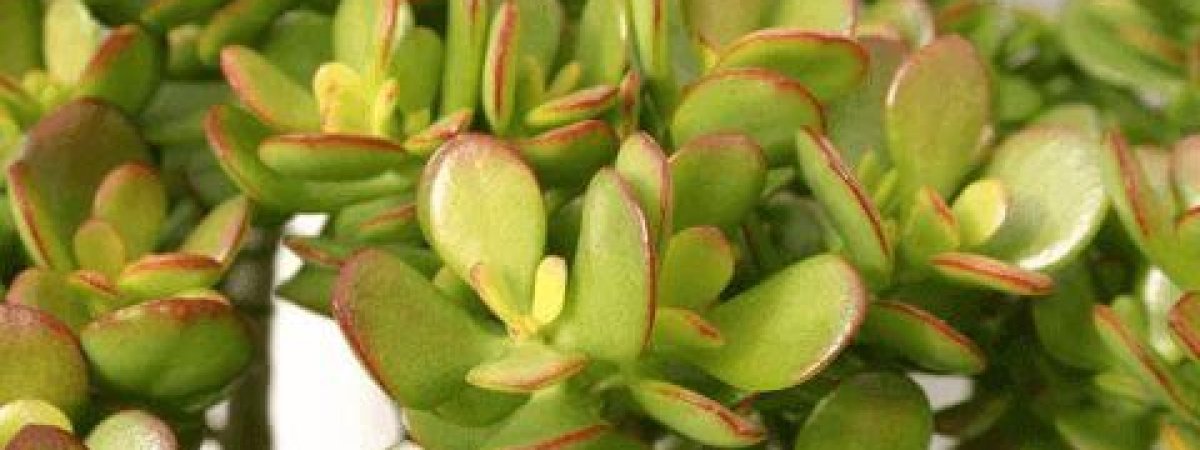Jade plants belong to succulents family – woody and thick stems with oval leaves. These plants have a miniature and tree-like appearance, making them an appealing houseplant you can plant as a decoration in the attic, patio, or even indoors.
The life expectancy of jade plants is longer than most popular houseplants, and they can reach a height of 3ft or more when planted indoors. It is easy to learn how to grow jade plants. They adapt well to dry and warm conditions, and can even grow as landscape plants outdoors in zone 10 or warmer areas.
However, jade plants are susceptible to winter damage. So, if you live in a colder climate, better grow jade in containers and shift the plant indoors as soon as the temperature falls below 10-degree Celcius.
In this blog, we have discussed everything from preparing the site, planting jade, to growing and harvesting the plant. You will also learn about the growing conditions, caring for the plant and about some pests/ diseases that may affect the succulent.
How to grow jade plant
Jade plants are underrated houseplants and succulents that are easy to grow. Being a part of the succulent family, overwatering can be fatal for the miniatures, so shift to keeping it drier. Before moving to grow jade, let’s talk about the ideal growing conditions of jade plants, and allow you to become a friendly and knowledgeable home gardener.

Ideal growing conditions for jade plant
Light
Young jade plants should not be exposed to direct, and intense sunlight or their leaves start scorching. Keep them in an area receiving bright but indirect sunlight. Jade plants that are well-adapted can thrive in 4-5 hours of sunlight in a day.
It would be best if you grow them in a room having windows on the south wall.
Soil
To create a succulent/all-purpose potting mix, take well-drained soil with a pH of 6.0, add a small amount of perlite in 2:1 ratio for proper drainage. Well-drained soil allows preventing extra moisture that may lead to fungal growth.
Water
While growing jade plants, you should water them often during spring and summer to keep the soil moist but do not overwater. Also, make sure there’s immaculate drainage.
During winters, water once in a month. You must never leave the plant sit in water.
Temperature and humidity
Growing jade plants successfully in summer requires an average temperature of 65-70 degrees Fahrenheit. During winters and at night, the preferred temperature falls to 44 degrees Fahrenheit. The plant is not frost-tolerant.
So, get the pot in when the temperature falls below 50 degrees Fahrenheit.
Fertilizer
During the growing season, many gardeners underfeed jade plants. In the start of the season, you should feed the succulent with a controlled-release fertilizer. Alternatively, you can use a weak liquid solution to feed jade plants once a week.
We would suggest you use one-quarter of a balanced 20-20-20 fertilizer for well-established jade plants. For younger plants, one with less nitrogen will do.
Planting your jade plant
Being succulents, you can try growing jade plants using single leaves or stem cuttings. Read on.
- Start with choosing a wide-mouthed and strong pot having sufficient depth because jade plants tend to grow to the top and fall over.
- Use well-drained soil to avoid excessive moisture. You can improve drainage by adding some perlite to your all-purpose potting mix – a ratio of 2:1 works well for preparing a perfect succulent mix.
- Prepare the pot and plant the succulent carefully.
- Take a stem cutting or remove a leaf from a mature jade plant. The stem cutting should be at least 2-3 inches long with a minimum of two pair of leaves.
- Allow the leaf/stem cutting to sit in a warm place for several days.
- You will see a callous forming over the cut area, promoting it to root and preventing rot.
- Get the prepared pot, lay the leaf horizontally on top of the soil, and cover the cut part with little soil.
- In case you are using a stem cutting, place it straight in the soil. You can use some toothpicks or small rocks to support it.
- Place it in a warm place with indirect yet bright sunlight.
- Don’t water the young jade plant right after.
- Let the root settle and recover (if damaged while planting) for a few days or one week before watering the plant.
- After a week, check if the root seems settled. If not, wait for a few more days to water your jade plant.
- Once it seems rooted perfectly, water it well.
- Use a turkey baster to water the plant gently, without disturbing its roots.
- You must ensure that water reaches the roots through the soil, and doesn’t remain on the surface layer.
- Allow the soil to dry out between each watering session.
- Always keep the plant away from intense and direct sunlight to prevent the leaves from scorching.
Read on to know the right ways of watering jade plants for helping them thrive well and healthy.
Watering Jade Plants
- In the summer and spring, as your jade plant grows actively, you must water it more than other seasons. Once you water the plant, wait for the soil to dry out well before watering it again.
- The ideal interval between two watering sessions can be a week or sometimes a month, depending on how long does the soil takes to dry out.
- During fall and winter, jade plants may turn dormant, resulting in slow growth or putting on a pause completely. It is the time when the plant requires minimal watering.
- Water it less often in spring and winter, but do not leave the soil to dry out completely between waterings.
- Well-established and large jade plants don’t usually require more than a couple of waterings during the dormant phase.
- Avoid splashing water on the jade leaves to keep them from rotting in humid conditions.
- Use distilled or filtered water for jade plants as they are sensitive to tap water (salts in tap water specifically).
- If you notice the leaves getting waterlogged or squishy, take this as a hint that you are overwatering it.
- Move the plant away (take it indoors) from cold temperature and shift to a warmer place.
- Feed jade plants sparingly. You can use a diluted mix of cacti or succulent fertilizer or a standard liquid houseplant fertilizer.

Repotting jade plants
Jade plants don‘t complain of remaining root bound in a small area/pot. Moreover, planting and preserving the jade root bound makes it more manageable.
However, if you want to repot the jade to encourage growth, you can do it every 2-3 years. It is best to transplant your plant in early spring – right before the growing season.
Similar to planting a fresh jade plant, do not water the repotted plant right after. Wait fora week or more. You should also consider waiting for a month (at least) to fertilize the plant.
Pest & diseases affecting jade plants
There are various problems that jade plants face throughout their growing season. Some of the most common issues that arise are pests like mealybugs or scale.
- Use a spray bottle to remove pests, or gently wipe off the insects by a paper towel with a small amount of rubbing alcohol.
- You may need to repeat the process multiple times to get rid of the offsprings.
- In the case of heavy infestation, better take a clean cutting from the plant and plant afresh.
- Excessive moisture may lead to root rot. So, you must ensure the soil dries out between waterings.
- Powdery mildew can also be a problem for jade plants
- Watering issues mostly lead to leaf drop.
- Leaving the plant thirsty results in the leaves turning wrinkled and shrivelled. Your plant needs regular and deeper waterings.
- Squishy and waterlogged leaves are a sign of overwatering the jade plant.
Conclusion
Jade plants are woody, thick stem succulents that are used as decorative houseplants. Learning how to grow jade plant is an easy job, but you need to be very careful throughout the growing season.
You have to be most careful when it comes to watering your jade plants. Most of the problems you face while growing jade plants are due to watering, such as leaf drop, squishy and waterlogged leaves, shrivelled leaves, etc.






